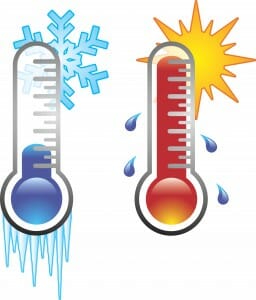
When it comes to exterior painting projects, the role of temperature cannot be overstated. The ideal air temperature for applying exterior paint and ensuring it dries correctly typically ranges between 50 and 85 degrees Fahrenheit. Understanding and adhering to this temperature range is crucial for optimal paint application and drying times.
It ensures the paint adheres well to the surface, providing a durable and visually appealing finish. Painting in temperatures outside this range can negatively affect the project’s success, leading to potential issues with how well the paint dries and its overall longevity.
Painting exterior surfaces in temperatures too cold, specifically below 50 degrees, presents several challenges. Cold weather can significantly affect paint consistency, causing oil-based paints to thicken and latex paints to potentially freeze. These changes can extend the drying times of the paint, impacting its ability to dry properly and adhere to the surface.
The result may include adhesion problems, where the paint fails to stick effectively, possibly leading to the need for a redo. Understanding these risks is essential when planning to paint in temperatures that may not be conducive to standard paint application.
Conversely, painting in conditions that are too hot to paint exterior surfaces can also pose significant risks. High temperatures can cause the paint to dry too quickly, leading to an uneven application and the appearance of brush marks.
The surface temperature of the house can be much higher than the air temperature, especially in direct sunlight or during peak heat hours. This discrepancy makes it imperative to avoid painting during the hottest parts of the day, as it can compromise the quality of the paint job and the ability of the paint to dry evenly and adhere properly.
The effects of humidity and wind further complicate exterior painting projects. High humidity levels can inhibit the paint’s ability to dry evenly, resulting in unsightly drips or streaks on the painted surface.
Meanwhile, strong winds can carry dust and debris onto wet paint surfaces, embedding these particles in the finish and potentially ruining the smooth look of the paint. Conversely, moderate wind conditions might help dry the paint more quickly but must be balanced carefully to avoid the aforementioned issues.

When planning an exterior painting project, the choice between oil-based paints and latex paints is crucial and should be influenced by the prevailing weather conditions.
Oil-based paints are known for their durability and resistance to wear, making them suitable for cooler temperatures where their longer drying times won’t be hindered by sudden temperature drops.
On the other hand, latex paints are preferable in warmer conditions due to their faster drying times and flexibility, which reduces the likelihood of cracking in fluctuating temperatures.
Regardless of the paint type, selecting the appropriate paint or stain for your project is essential for combating weather-related challenges, ensuring the longevity and aesthetic appeal of your exterior painting project.
Effective planning is key to a successful exterior painting project, especially when considering weather conditions. Start by consulting the weather forecast to choose a period with ideal temperature and humidity levels for painting.
It’s best to paint during mild weather conditions, avoiding extreme heat or cold that can affect the paint’s drying process and final finish. Monitoring both air and surface temperatures is vital to ensure that the paint or stain adheres well and dries evenly.
Choosing the right time of day to paint, typically in the late morning or early afternoon, allows the paint to dry under optimal conditions, avoiding the dew of early mornings or the cool of late evenings.
The expertise of a professional painting company like BCI can be invaluable for your exterior painting needs. Professional painters have the experience to tackle weather challenges, ensuring that painting is done under the most suitable conditions.
They possess the knowledge to select the best paints or stains for your specific climate, factoring in temperature and humidity to choose products that will offer the best performance and durability. With their skilled application techniques, professionals can guarantee a finish that not only looks great but also withstands the test of time, regardless of temperature extremes.
Ready to transform the exterior of your home with a professional touch? Contact BCI today to ensure your painting project is completed flawlessly, regardless of the weather conditions. Let our experts provide you with a durable and attractive finish that enhances your home’s beauty and value.